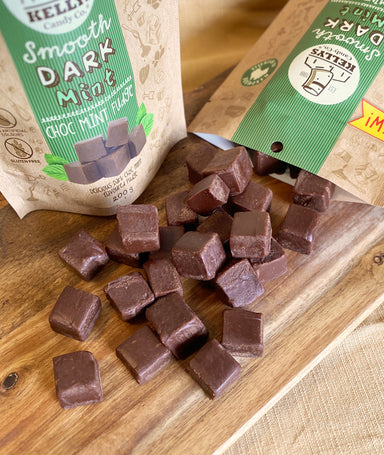Our I Luv Candi Statements
Our I Luv Candi Statements
Blog Article
Little Known Facts About I Luv Candi.
Table of ContentsI Luv Candi Can Be Fun For EveryoneI Luv Candi for BeginnersThe Single Strategy To Use For I Luv CandiThe Buzz on I Luv CandiWhat Does I Luv Candi Mean?
You can likewise estimate your own profits by using different assumptions with our monetary plan for a candy store. Average monthly revenue: $2,000 This kind of sweet-shop is frequently a little, family-run company, possibly known to locals yet not bring in multitudes of vacationers or passersby. The store may offer a selection of usual sweets and a few homemade treats.
The shop does not normally bring rare or pricey things, concentrating instead on inexpensive treats in order to keep routine sales. Assuming an average investing of $5 per consumer and around 400 clients per month, the monthly earnings for this sweet-shop would certainly be around. Typical monthly earnings: $20,000 This sweet-shop gain from its calculated location in an active metropolitan location, drawing in a lot of consumers trying to find sweet extravagances as they shop.

Along with its varied sweet selection, this shop may likewise sell relevant products like present baskets, candy bouquets, and uniqueness products, providing numerous income streams. The shop's area requires a greater allocate rent and staffing yet brings about greater sales quantity. With an approximated average costs of $10 per customer and about 2,000 clients monthly, this shop might create.
About I Luv Candi
Situated in a major city and vacationer location, it's a large establishment, often topped multiple floorings and perhaps part of a national or global chain. The store provides a tremendous selection of candies, including special and limited-edition things, and merchandise like top quality garments and devices. It's not just a shop; it's a destination.
The functional expenses for this type of store are substantial due to the location, dimension, team, and includes supplied. Thinking an ordinary acquisition of $20 per client and around 2,500 consumers per month, this front runner shop can achieve.
Classification Examples of Expenses Average Monthly Cost (Range in $) Tips to Reduce Expenses Rental Fee and Utilities Shop rent, electricity, water, gas $1,500 - $3,500 Think about a smaller area, discuss rental fee, and use energy-efficient lighting and appliances. Stock Candy, treats, product packaging products $2,000 - $5,000 Optimize supply management to reduce waste my explanation and track popular items to prevent overstocking.
Some Ideas on I Luv Candi You Should Know
Advertising And Marketing and Advertising and marketing Printed materials, on the internet advertisements, promos $500 - $1,500 Concentrate on cost-efficient digital marketing and make use of social media systems free of charge promo. Insurance coverage Company responsibility insurance $100 - $300 Search for affordable insurance rates and think about packing plans. Equipment and Maintenance Sales register, display shelves, repair services $200 - $600 Buy used equipment when possible and execute regular maintenance to prolong devices life-span.

This implies that the sweet-shop has actually gotten to a factor where it covers all its dealt with expenditures and begins generating income, we call it the breakeven point. Consider an example of a sweet-shop where the monthly fixed expenses normally total up to about $10,000. A rough estimate for the breakeven factor of a sweet-shop, would certainly after that be about (since it's the overall fixed expense to cover), or offering in between with a rate range of $2 to $3.33 per unit.
See This Report on I Luv Candi
A large, well-located sweet shop would clearly have a greater breakeven factor than a tiny shop that does not need much revenue to cover their expenses. Interested about the productivity of your sweet store?
One more threat is competition from various other candy shops or bigger sellers that might use a larger range of products at lower rates (https://cpmlink.net/XwiLAQ). Seasonal changes popular, like a decrease in sales after holidays, can also affect profitability. In addition, altering customer preferences for much healthier snacks or nutritional restrictions can reduce the appeal of conventional sweets
Finally, financial recessions that lower customer investing can impact sweet-shop sales and profitability, making it vital for sweet-shop to handle their expenses and adapt to transforming market problems to stay successful. These threats are usually included in the SWOT evaluation for a candy store. Gross margins and internet margins are crucial signs made use of to assess the profitability of a candy shop business.
See This Report on I Luv Candi
Basically, it's the revenue staying after deducting costs straight pertaining to the candy inventory, such as acquisition expenses from providers, production prices (if the sweets are homemade), and personnel salaries for those entailed in manufacturing or sales. https://www.imdb.com/user/ur179367098/. Net margin, conversely, elements in all the expenses the sweet-shop incurs, consisting of indirect prices like management expenditures, advertising and marketing, rental fee, and tax obligations
Sweet stores usually have an average gross margin.For circumstances, if your candy store makes $15,000 per month, your gross revenue would certainly be about 60% x $15,000 = $9,000. Think about a candy store that sold 1,000 sweet bars, with each bar priced at $2, making the overall income $2,000.
Report this page